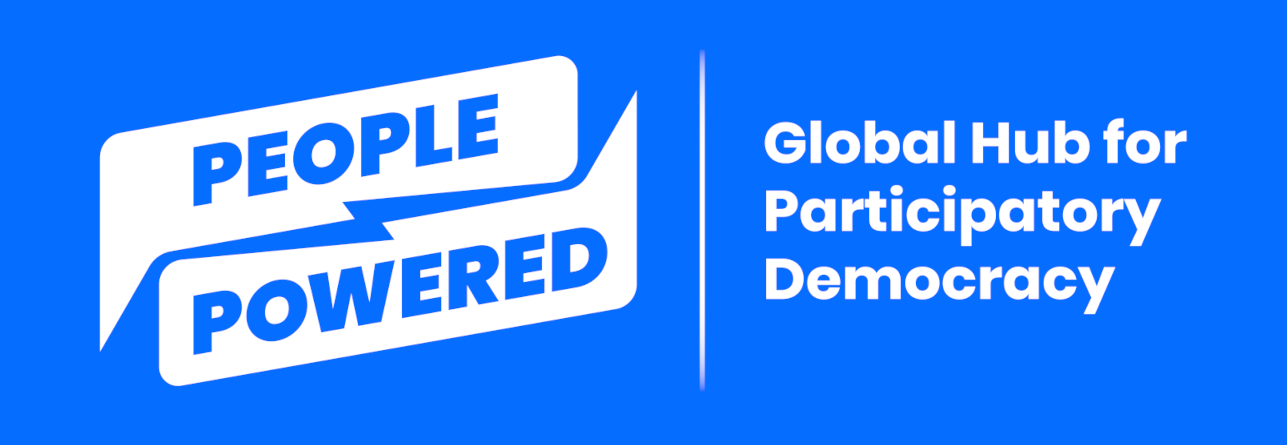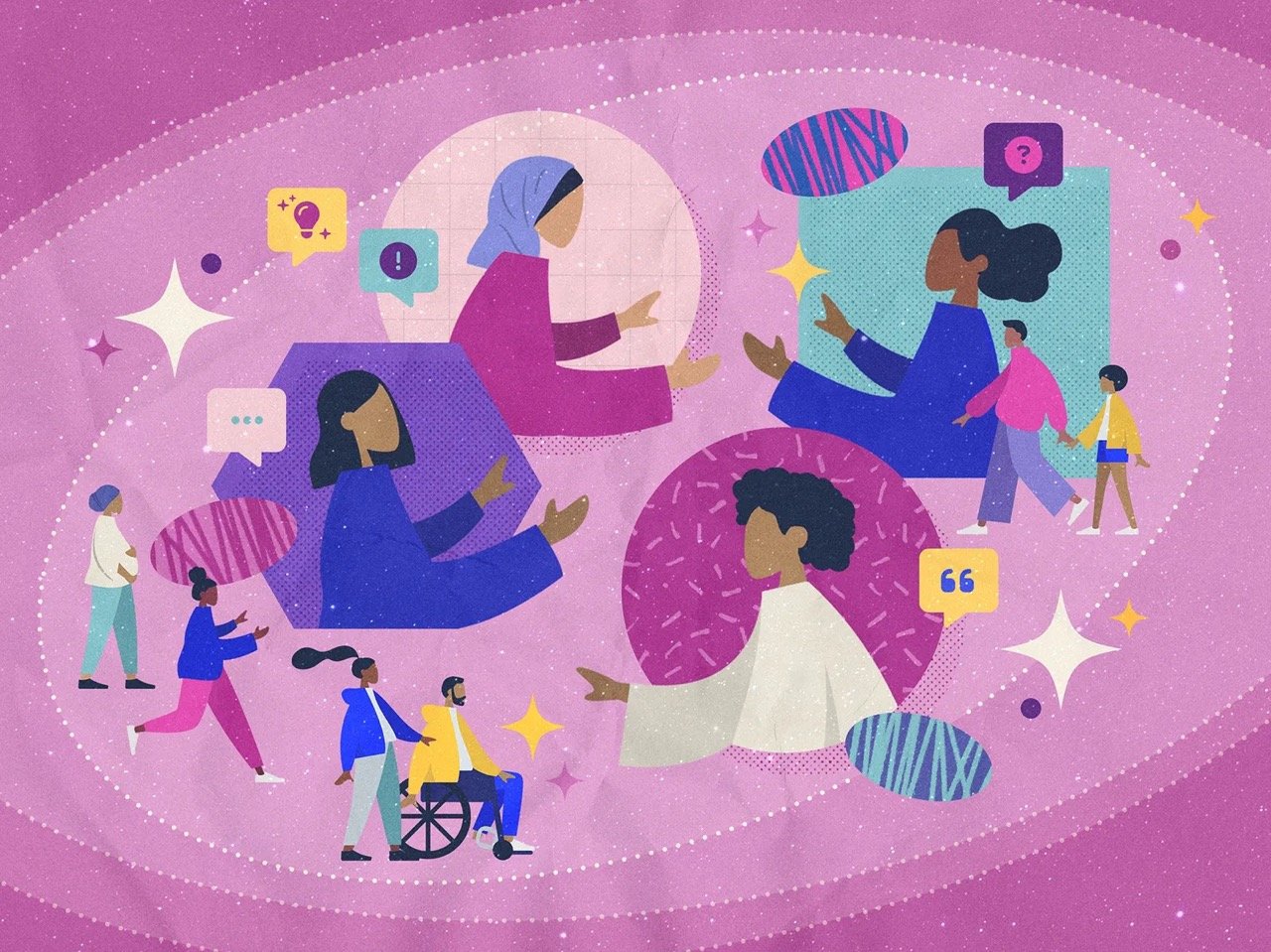Inclusive by default: strategies for more inclusive participation
/Image by Andi Lanuza
by Luiza Jardim and Maria Lucien
In our work at People Powered, a global hub for participatory democracy, we have observed common challenges: organizations and governments often struggle to engage marginalized communities in participation. When checking the profile of the participants, they might find a mirror of elected representatives, in terms of gender, age, race, and other markers of social inequality in their contexts. While sortition might initially gather a more representative group of participants, it does not remove structural forces altogether – contextual factors such as power dynamics still prevent the effective, meaningful or sustained participation of some groups.
Defaulting to inclusion
We all know that participation comes with a cost. Existing indicators of privilege or inequality manifest in the ability to overcome the barriers to entry for participation. A working mother might not have the childcare or time to attend every session of a citizens’ jury. A teenager might have to leave a session early to balance commitments to school, part-time jobs and extracurriculars. Even in an otherwise well-designed process, the quality and legitimacy of participation or deliberation suffer from the gap in perspectives at the table.
We have found that governments struggle to find comprehensive support to improve the design of their programs and adopt best practices for inclusion. With this in mind, People Powered convened a group of 13 organizations across Africa, Europe and the Balkans, and Latin America. Through a series of workshops, virtual meetings, in-person convenings and a baseline survey, over two years, we discussed the best strategies for building an inclusive democracy, focusing on the inclusion of women, displaced people and youth in participatory and deliberative processes. From this collaborative exchange, plus case studies and resources available in our resource centre, we synthesized the key learnings into free online courses to help practitioners identify barriers and strategies to run inclusive participatory processes.
Shifting participation to be inclusive by default demands a fundamental reframing of perspective and practice to evaluate process design through a critical lens of power and history. While participatory and deliberative processes hold promise as tools for broadening representation and amplifying marginalized voices, they must be intentionally designed to acknowledge and address systemic barriers to engagement.
Shifting participation to be inclusive by default demands a fundamental reframing of perspective and practice to evaluate process design through a critical lens of power and history.
The systemic challenges that marginalized groups face are pressing and require action. The global average age of parliamentarians is 53, highlighting a gap in youth representation. Young people already face challenges like poverty, lack of education, unemployment and multiple forms of discrimination. Additionally, some participatory formats are often unappealing to young people and pose a challenge for engaging them. Gender equity research highlights the underrepresentation of women at all levels of decision-making and governance. Despite recent improvements, gender parity in governance worldwide is still decades or even centuries away. Meanwhile, ongoing global conflicts in Ukraine, Sudan, Gaza and elsewhere, as well as the impacts of a changing climate, have driven the recent increase in the number of forcibly displaced people to more than 100 million. The engagement of these individuals in decision-making can vary greatly depending on their specific circumstances and the nature of their displacement.
The solution
Participatory and deliberative democracy can have transformative impacts on historically marginalized communities but only if they are intentionally included in program design and implementation. To start with, it’s possible to reduce the barriers to participation, such as the cost and time of transport to the participation venue, or burdens imposed by social and cultural roles in society, like childcare. During the process, mindful and attentive facilitation can help balance power dynamics and encourage participation from traditionally excluded people. This is further strengthened if the facilitation team includes and trains members of priority communities in facilitation and session planning.
Our courses are designed to help practitioners and program managers learn about the context and barriers that impact women, young people and displaced people, and implement inclusion strategies throughout every stage of a participatory process. Whilst designs must be adapted to local contexts, some overarching approaches apply to the inclusion of any marginalized group. Below we outline three key questions, recommendations and examples from practice to help guide inclusion for any one specific group. These approaches should always be viewed through the critical lens of power and history in that specific community and context.
1. Question: Can I do it with support or capacity from my partnerships with my target community?
Recommendation: Engage the community and key stakeholders through every step of the process. If the target community is engaged from advocacy until evaluation, the chances that the process will be inclusive and perceived by the community as inclusive, are higher. Many inclusion strategies can be designed in consultation or collaboration with the target community through partnerships with their networks and organizations.
In practice: In Taiwan, international students and second-generation immigrants were trained to serve as facilitators to communicate with migrant workers in their own language and cultural interface. This Participatory Budgeting process was specifically launched to provide participation opportunities for migrants, who constitute a significant proportion of the labor force.
2. Question: Can a strategy be used alongside other strategies to address some of the barriers faced by intersecting identities in the target community?
Recommendation: Consider the intersectionality of groups. How do different intersections of identity interact with the barriers different communities face, and what methods can you use to address these barriers in your process? For example, women who are displaced may face different barriers from men who are displaced, or experience the same barriers differently. Consider the specific challenges encountered at salient intersections of identity groups, such as people with disabilities, LGBTQI+ people, and racial and ethnic minorities.
In practice: In Kyrgyzstan, local citizen volunteers were elected as community reporters, with an emphasis on young people and women, and reached out to residents to help assess their infrastructure and needs for an online participation process.
3. Question: What historical or cultural contexts should I be aware of when communicating or implementing this strategy?
Recommendation: Consider how past events, social norms and cultural practices might interact with how the community engages. Be conscious of the language used during outreach and during every interaction with target groups. Pay attention to gendered words, pronouns, people’s first language and other aspects that might be important in communication, planning, and outreach.
In practice: The National Youth Institute in Chile chose CitizenLab to reach as many young people as possible to combat negative attitudes to participation and low civic activity in youth. In some conservative areas, women are discouraged from being active outside the home — providing anonymity via Your Priorities in a rural village in Kyrgyzstan allowed women to engage without constraint.
In practice
Practitioners applying these strategies are already seeing results. Ollin, a People Powered member in Mexico, helped launch a new Participatory Budgeting program to build a more inclusive democracy in a small, completely Indigenous community in Hidalgo. Participation in formal mechanisms was very limited among this community’s inhabitants and in the non-institutional arenas of village decision-making, women were rarely included. Ollin spent significant time with the community, to understand customs and culture surrounding gender and meeting with leaders on the ground. Empowering women to manage the program, engage and reach out to others in the community encouraged participation and inspired them to be more civically active. Women proposed two of the three most-voted projects, and after the PB process, their voices started to be heard more in the village. After the process ended, the community elected the first-ever woman to their local delegation.
While the impact may not be immediate, it lays the groundwork for sustained systemic change, promoting lasting diversity and equity in decision-making processes.
As excluded individuals see their perspectives valued, they become more civically engaged, diversifying decision-making more broadly. Inclusive participation confronts biases and exclusionary attitudes, setting a new standard for subsequent participation. While the impact may not be immediate, it lays the groundwork for sustained systemic change, promoting lasting diversity and equity in decision-making processes.
Genuine inclusivity requires intentional efforts to dismantle entrenched inequalities and center the experiences of historically marginalized communities. By adopting strategies that prioritize community engagement, recognize intersectionality, and promote inclusive language, we can begin to reshape participatory processes to be inclusive by default. As we cultivate environments where all voices are valued and empowered, we pave the way for enduring diversity and equity in decision-making..
Acknowledgments
The authors would like to thank the National Endowment for Democracy for their support in enabling the above-mentioned collaborative exchange with 13 organizations of the Global South, which led to the creation of the online courses as well as to the ideas shared in this article.
This article was originally published on Deliberative Digest Democracy and is re-published on People Powered to enable readers to read the article in their own language using our translation feature.






